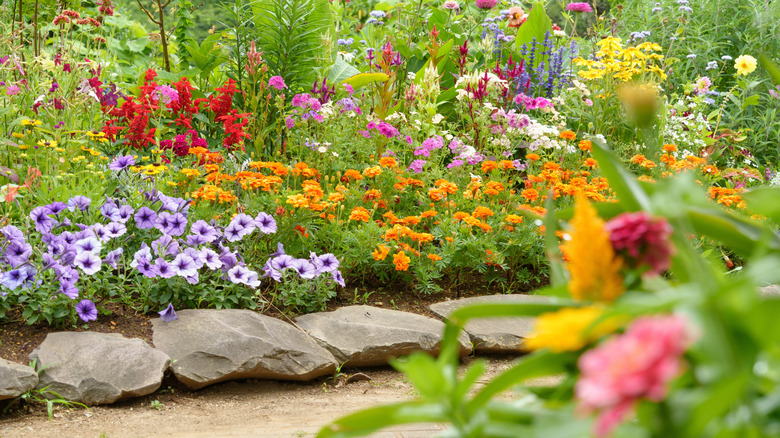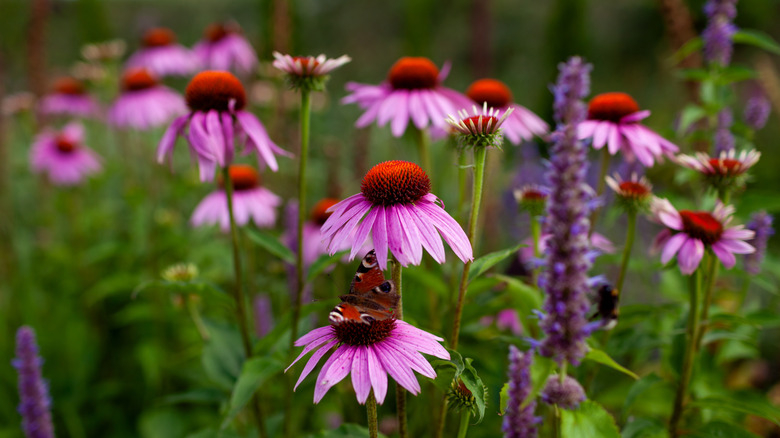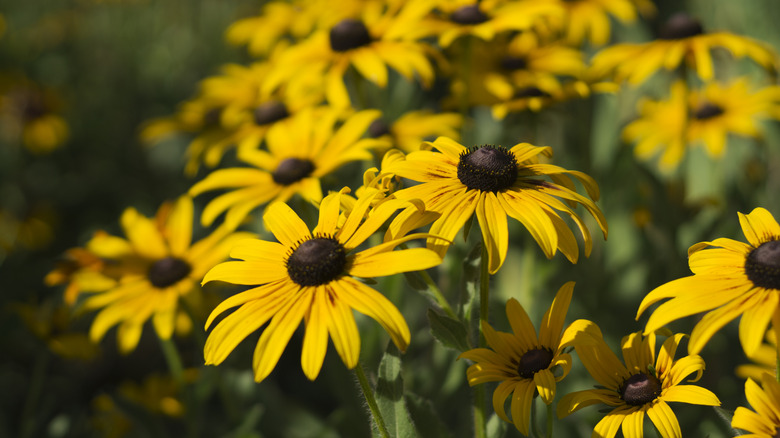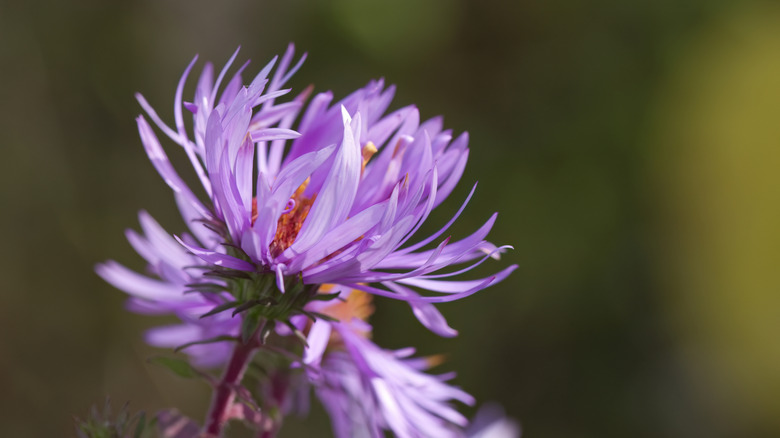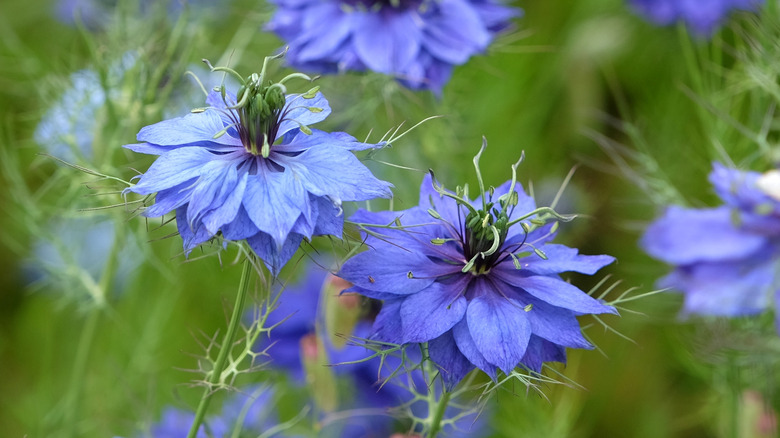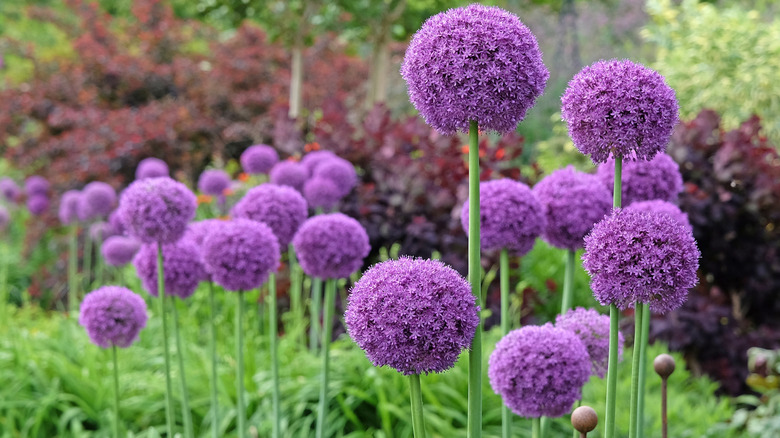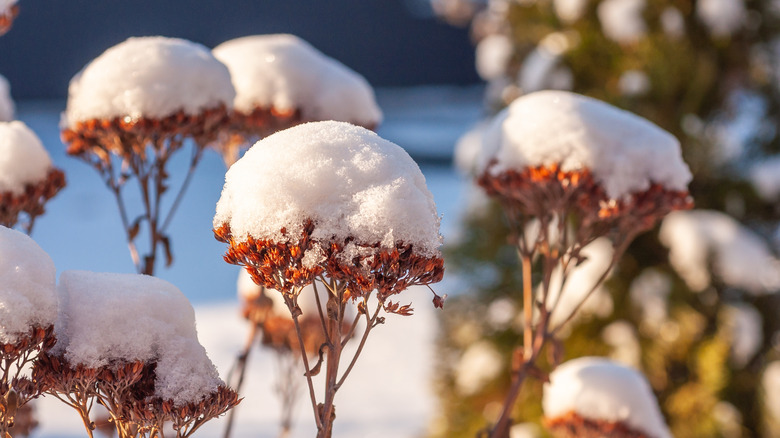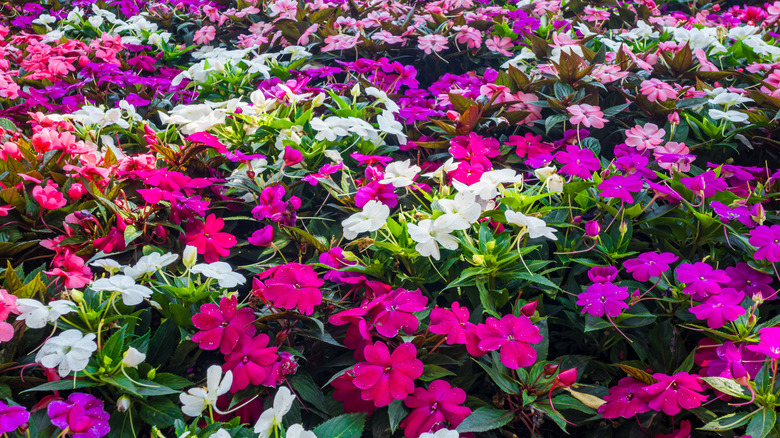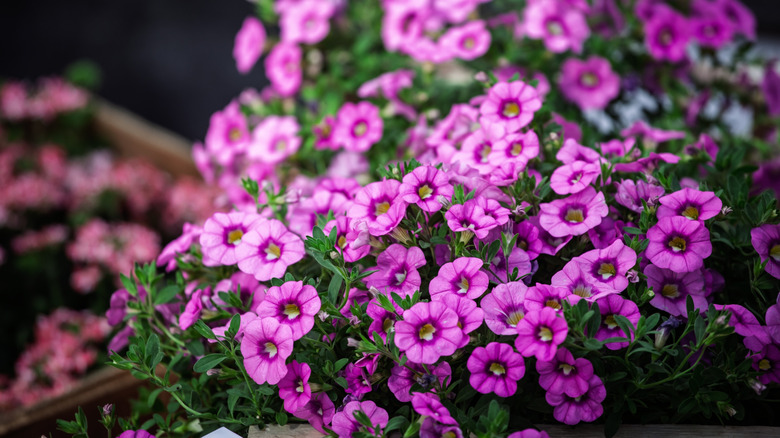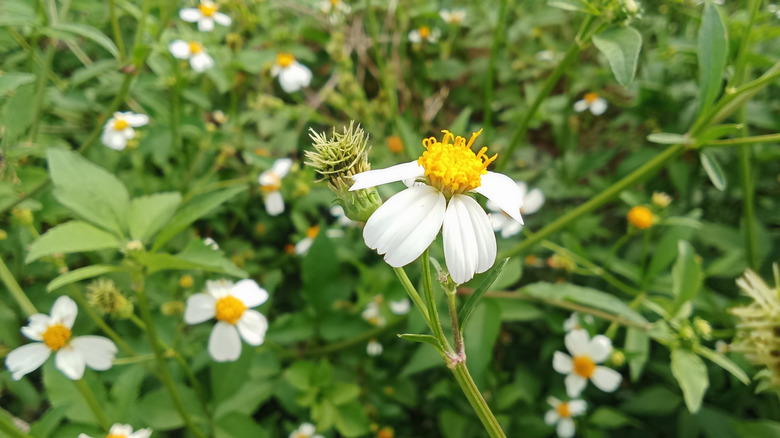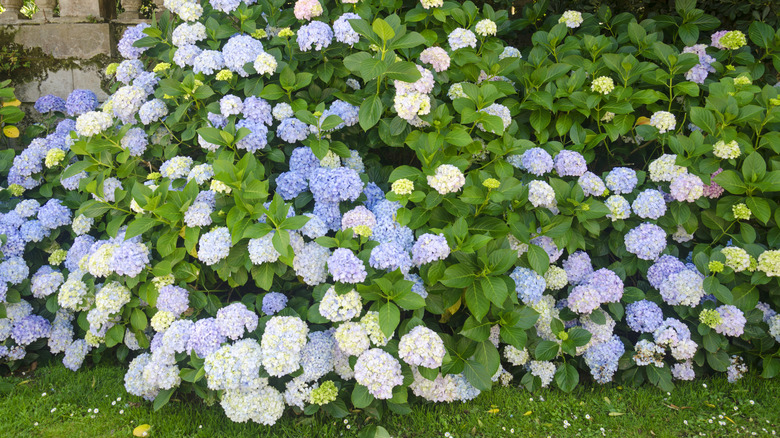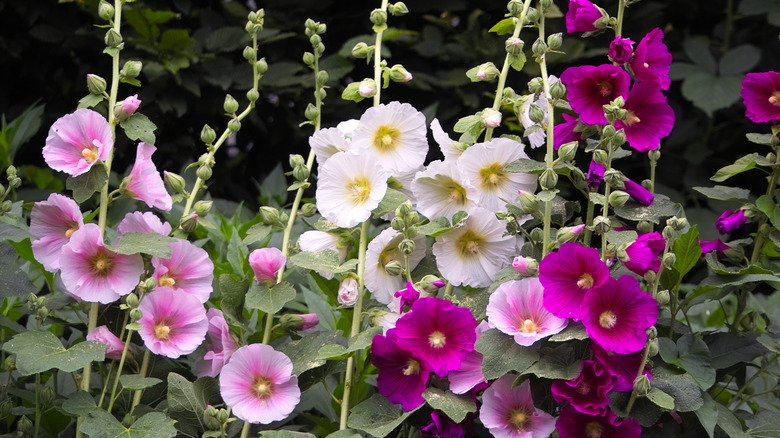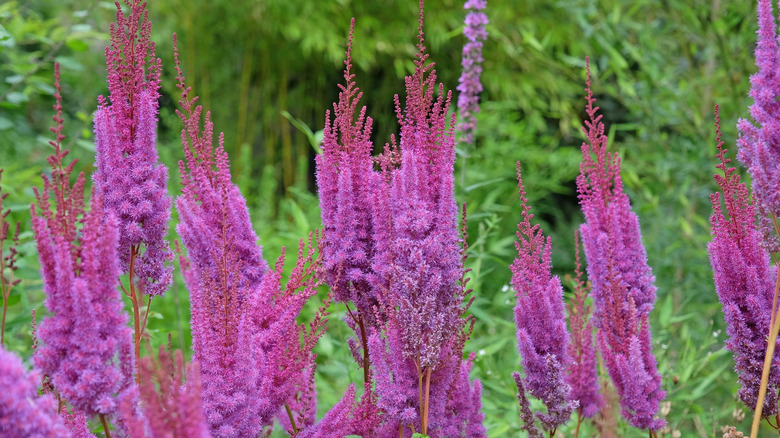Savvy Gardeners Know That Deadheading These 12 Common Flowers Is A Mistake
Sooner or later, the time comes in the growing season when gardeners must begin the time-consuming process of deadheading, or removing the dying flowers from each plant (no relation to the Grateful Dead's avid fans). The savviest gardeners know that not every flowering plant requires deadheading. In some cases it's a waste of time, and in others it may do more harm than good. Flowers in your garden to avoid deadheading include coneflowers, calibrachoa, some hydrangeas, and more.
Deadheading in the garden is a must for some flowers. One, it makes the plant look neater since old, crumply flowers aren't generally considered attractive. Two, it prevents the plant from directing energy into producing seeds, the next stage after flower production. Instead, the plant continues to produce more flowers, allowing gardeners to enjoy the display for longer. Seed production not only takes energy away from the rest of the plant, but also hastens the end of the life cycle of annual plants, which die after reproducing. Plus, if you want to prevent a plant from spreading seed, deadheading is the solution.
On the other hand, there are good reasons not to deadhead certain plants. Self-cleaning flowers drop old blooms on their own, so no deadheading is necessary. In other cases, allowing seeds to form is worthwhile because they're a source of food for wildlife. Some seedheads are quite beautiful in their own right, so gardeners prefer to let them develop. Lastly, you must allow many annual and biennial plants to go to seed if you want them to return in the same spot the following year.
Coneflower
As wildflowers that are native to the eastern and central United States, coneflowers (the Echinacea genus) are an important part of local ecosystems: butterflies eat the nectar, and the seeds provide food for birds in the fall and winter. Coneflowers also self-seed, so allowing seedheads to form rather than deadheading is one way to ensure a plentiful planting. Instead of deadheading to get more flowers, you can apply flower fertilizer during the growing season. There are various species and cultivars of coneflowers; they are generally cold-hardy in USDA zones 3 to 9.
Black-eyed Susan
Black-eyed Susans (Rudbeckia genus) are in the sunflower family and have similar daisy-like flowers. They're native to North America and are typically hardy in zones 3 to 9, depending on the species. They attract many different pollinators and are a source of food for seed-eating birds, so it's worth letting those seedheads form. Black-eyed Susans also naturally bloom for a long time without any deadheading, from late July until first frost, and they will re-seed and come back year after year — they can even spread a bit aggressively, at which point maintenance is a good idea.
Aster
A third wildlife food source to avoid deadheading is asters. These vibrant star-shaped flowers are usually hardy in zones 3 to 8. Some are native to North America, with the two most common being the New England aster (Symphyotrichum novae-angliae) and the New York aster (Symphyotrichum novi-belgii). The flowers attract pollinators through the summer and fall when many other flowers are gone, and after the seedheads form they feed cardinals, goldfinches, chickadees, towhees, and nuthatches through the winter.
Love-in-a-mist
Love-in-a-mist (Nigella damascena) is an annual plant with bright blue flowers that grows well from zones 2 to 11 and blooms from June to August. In this case, the reason to avoid deadheading is that you'd miss out on the lovely seedheads, which have an attractive, unique shape — a bit like a balloon. The seedpods can be dried for use in floral arrangements or in cooking. Love-in-a-mist also has nice foliage, so it's a great ornamental plant whether it's in bloom or not. It will self-seed and return the next year.
Ornamental onions
Ornamental onions are another example of plants with attractive seedheads to skip deadheading. There are around 700 species in the Allium genus, some of which are familiar food plants (like garlic), but ornamental onions are planted for beauty alone. Ornamental onions produce unique balls of flowers; some are grown as annuals, others as perennials, with a hardiness zone range of 3 to 8. The seedheads continue to provide beauty in the garden into winter. The foliage can look untidy after flowering; to avoid having to prune green foliage, plant ornamental onions strategically so it's not as visible.
Sedum
Sedum, also known as stonecrop, is a genus of succulents with more than 400 species of both perennials and annuals. Deadheading these hardy beauties would be a mistake, as the main blooming period is just the start of the show. With evergreen leaves and flowers that remain colorful even after dying, sedum are a perfect addition to winter gardens. The seedheads even look beautiful when covered in snow or ice. They work well for flower arrangements, too. Sedum come in low-growing as well as upright varieties, and perennial sedum are generally hardy in zones 3 to 10.
Impatiens
Impatiens are a common bedding flower thanks to their bright colors and compact size. They're also quite easy to care for — not only do they not require any pruning to maintain a nice shape, but they are also self-cleaning. After blooming, the spent flowers drop off on their own and the "impatient" seed pods (the plant's namesake) will burst open. Impatiens are grown as annuals in most of the US; they can be a perennial in zones 10 and 11. Look for newer varieties that are resistant to downy mildew, a widespread issue with these flowers.
Calibrachoa
Also called trailing petunias, calibrachoas look quite similar but are in their own genus. It's best not to bother deadheading calibrachoas: they naturally produce lots of flowers throughout the season with no deadheading required, and they are self-cleaning. Expect blooms from the time of planting until the first frost. Calibrachoas come in lots of colors (often more than one on the same plant) and are grown as annuals except in zones 9 to 11. About halfway through the season, cut back the plant and fertilize it to keep it healthy and full of life all year long.
Bidens
With about 200 species in the Bidens genus, there are a lot of options to choose from, including upright and trailing varieties. Bidens are another low-maintenance plant that requires no pruning or deadheading, unless they become leggy or outgrow their bed. However, fertilizing every four to six weeks can encourage continuous and abundant blooms. Bidens usually flower from May to October and attract pollinators as well as hummingbirds. They are usually grown as an annual but are hardy in zones 9 to 11.
Hydrangeas
Hydrangeas should be evaluated on a case-by-case basis when it comes to deadheading. Those that flower on new wood benefit from deadheading — but for next year's growth, not the current year's. Deadheaded stalks won't produce more blooms. Those that flower on old wood, including all big leaf hydrangeas and climbing hydrangeas, shouldn't be deadheaded because the dead flowers protect the new buds on the plant. Reblooming hydrangeas, which flower on both old and new wood, can be deadheaded if you want to, but it's not necessary. Hydrangeas are hardy in zones 3 to 9.
Hollyhock
Hollyhocks (Alcea rosea) are a biennial plant: They live for two years, after which they go to seed and die. If you opt to deadhead the hollyhocks in your garden, they won't get a chance to produce seed and won't appear again next season. Some gardeners prefer to deadhead anyway to extend the plants' blooming period, but hollyhocks naturally flower for a long time regardless, from the middle of summer until the fall. If you still decide to deadhead, leave the last flowers on the plant to go to seed if you want to enjoy hollyhocks again next season.
Astilbe
Astilbes are ideal flowers for shady areas, and they are hardy in zones 3 to 9, depending on the variety; there are hundreds available with different blooming times and heights. They usually flower for around four to six weeks, and deadheading is not required because it won't encourage any more blooms. Plus, astilbes' flowers dry into pretty plumes that keep your garden colorful through fall and winter. They will also self-seed a bit if you're lucky, and the seedheads are a source of food for wildlife. To encourage flowering the following year, fertilize in October with a high-nitrogen fertilizer.
